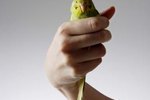
Canaries are known for their singing, and most people buy them for that reason. They're also lively, intelligent birds who make good companions. With patient and consistent training, canaries can be taught to sit on a hand, perch or to fly loose out of their cages. Young birds are easiest to train.
Getting Acquainted
Training your canary is a slow process, since they can be nervous birds worried about predators. Until you're familiar to your bird, he will be afraid of you. Let your canary get to know you before you begin training. When you bring a him home, give him a few days to adjust to his new surroundings. Cover his cage at night or put him in a quiet, dark room so he recognizes day from night. Once he's comfortable in his new home, you can begin his training.
Making Friends
Get to know your canary gradually. Begin by spending two sessions each day, from 10 to 15 minutes each, sitting near his cage and talking quietly to him. Keep him in a room where he can see the household activity. When you're near his cage, talk to him and make noises so he recognizes you as a friend. After several days, place your hand slowly inside his cage while you hold a treat. He may not take it right away, but it will teach him to associate you with things he likes.
Tempting Treats
Canaries love treats, and the way to make friends with one is to offer him things he likes. Slice vegetables such as broccoli, kale, asparagus, carrots, tomato and zucchini to offer when taming your bird. Use fruits such as apples, blueberries, bananas, grapes, peaches and melons to tempt him. These are all excellent to supplement your bird's diet and will encourage him to sit on your hand.
Read His Signals
Take your time training your canary. Hold treats lightly at the end of your hand between your fingers so it's easy for him to take them. Watch for signs of stress. If your bird's feathers are flat against his body, if he's panting with his mouth open or moving away from you, he's afraid. Leave a bit of the treat in his cage and remove your hand to let him rest. Begin the same process in your next session. It can take some time, but with patience and persistence your canary will soon be sitting on your hand for treats.
References
Photo Credits
-
Comstock/Stockbyte/Getty Images




